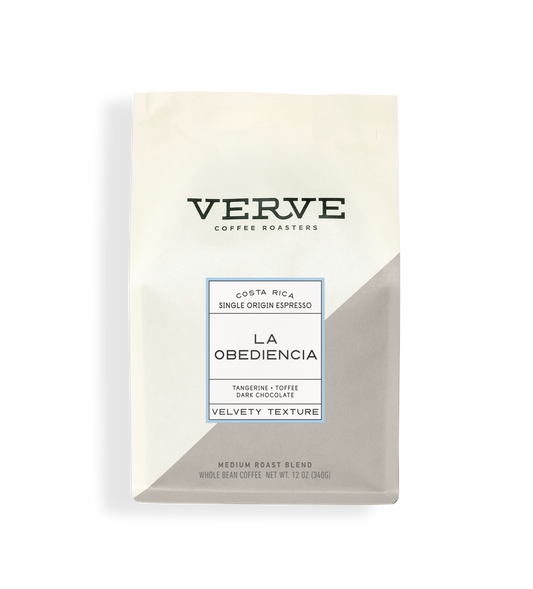The Coffee Lover’s Guide to SOE Single Origin Espresso Beans
The Coffee Lover’s Guide to SOE Single Origin Espresso Beans
Blog Article
Comprehending Coffee Beans: the Journey From Espresso to Blended Coffee Beans
The Beginnings of Coffee: An International Point Of View
While you might think about coffee as a modern-day staple, its origins map back centuries, intertwining with societies around the world. The tale begins in Ethiopia, where legend states a goat herdsman named Kaldi uncovered the stimulating effects of coffee beans after seeing his goats frolicking vigorously after consuming them. This stimulated passion, causing coffee's infect Arab traders that cherished the brewed drink. By the 15th century, it got to Persia, Egypt, and Turkey, where coffeehouses ended up being social centers for discussion and culture.
As profession paths broadened, coffee made its method to Europe in the 17th century, promptly gaining appeal. Each society added its one-of-a-kind spin to coffee prep work, improving its background.
Farming and Harvesting of Coffee Beans
As coffee's trip advanced, the focus shifted to the growing and harvesting of details bean selections, particularly those used for espresso. You'll discover that coffee beans frequently come from Arabica or Robusta plants, each offering unique tastes. The perfect growing conditions consist of high elevations and abundant, well-drained dirt, which boost the beans' quality.
Throughout the harvest, picking methods vary. In some regions, employees hand-pick ripe cherries, ensuring only the finest fruit goes to processing. In various other locations, mechanical harvesters are utilized, especially on larger ranches. Timing is vital; you wish to gather when the cherries reach peak perfection for optimum taste.
As soon as collected, the beans are prepared for handling, which is essential in determining their last taste. Recognizing the growing and collecting processes gives you insight into what enters into your favored espresso, enhancing your admiration for each mug.
Handling Methods: From Cherry to Bean
Since you've learnt more about collecting coffee beans, allow's check out how those cherries transform into the coffee beans you love. You'll see how various harvesting techniques effect flavor, followed by the necessary actions of fermentation and drying out. Ultimately, we'll break down the milling and grading procedure that identifies your coffee's top quality.
Gathering Methods Clarified
When it involves coffee, recognizing harvesting strategies is necessary, because they directly influence the flavor and top quality of the beans you take pleasure in. There are two key approaches: careful selecting and strip selecting. Selective picking involves hand-picking just ripe cherries, guaranteeing you obtain the most effective high quality beans. This approach commonly causes a richer flavor account, though it's even more labor-intensive. On the other hand, strip choosing ways harvesting all cherries simultaneously, no matter ripeness. While it's quicker and cheaper, this can lead to a mix of tastes, affecting the end product. Ultimately, the option of gathering method can considerably affect your coffee experience, so it's worth recognizing just how those beans made it to your mug.
Fermentation and Drying
After collecting, the next action in processing coffee beans play a substantial duty fit their taste. You'll locate that fermentation is vital, as it helps break down the mucilage surrounding the beans, enhancing their preference account. Depending on the technique, this procedure can last from a couple of hours to several days, with varying results based upon temperature level and humidity.
Sun-drying enables the beans to soak up flavors from the setting, while mechanical drying guarantees constant moisture degrees no matter of weather condition. Appropriate drying out is vital to protect against mold and protect the beans' quality, eventually influencing your cup of coffee.
Milling and Grading Refine
As fermentation and drying established the stage for flavor development, the milling and grading procedure assurances that just the most effective coffee beans make it to your cup. This phase entails eliminating the outer layers of the coffee cherry, consisting of the parchment and husk. After milling, the beans are arranged by dimension and weight, making sure a consistent top quality. You'll find that grading assists identify flaws and categorize beans, which affects flavor and aroma. Top quality beans get a greater grade, leading to a richer coffee experience. When rated, the beans await packaging and delivery, preserving their one-of-a-kind characteristics. This careful process is necessary for supplying the phenomenal taste you enjoy in every sip of your preferred mixture.
Toasting Methods: Unlocking Flavor Prospective
When you roast coffee beans, the technique you select can considerably influence the taste profile. Recognizing the relationship in between time, temperature, and toasting strategies is essential to exposing the capacity of your mixture. Allow's discover just how these components integrated to produce the perfect mug.
Toasting Techniques Described
While you could believe that all coffee toasting approaches generate the same outcomes, the truth is that each strategy exposes one-of-a-kind flavor capacities in the beans. Drum roasting makes use of a turning drum to equally disperse heat, improving caramelization and creating a balanced taste. Air roasting, on the other hand, circulates warm air around the beans, advertising a lighter roast with obvious acidity.

Impact on Flavor Profile
Various toasting methods not only affect the procedure but likewise considerably affect the taste profile of the coffee beans. Dark roasts, on the other hand, bring out strong, smoky tastes, often covering up the bean's distinct characteristics. Understanding these subtleties aids you appreciate the artistry behind your mug of coffee, boosting your total experience with every sip.
Time and Temperature Level Factors
To launch the complete flavor capacity of coffee beans, both time and temperature level during the roasting process play substantial duties. When toasting, you'll find that greater temperature levels can rapidly create tastes, yet if you hurry it, you may wind up with charred notes. Alternatively, reduced temperature levels enable for a more steady taste advancement, showcasing the beans' one-of-a-kind qualities.

Timing is equally as vital; expanding the roast as well long can bring about a loss of acidity and brightness, while also brief a roast may leave the beans underdeveloped. Locating that sweet spot needs practice and trial and error. By readjusting these aspects, you can expose the rich, complex tastes concealed within each bean, creating a truly amazing coffee experience.
The Art of Blending: Crafting Distinct Coffee Profiles

Beginning by choosing a base coffee that supplies a solid foundation. A bright Ethiopian bean can bring fruitiness, while an abundant Brazilian coffee adds body.
As you mix, maintain in mind that each mix narrates. You're not just making coffee; you're creating an experience. So, take your time, taste often, and take pleasure in the journey of uncovering your trademark mix.
Developing Approaches: Just How Prep Work Impacts Flavor
Blending coffee opens up a domain of taste opportunities, however exactly how you make that blend can considerably influence your last cup. Different developing approaches extract unique flavors and aromas, so it's essential to pick intelligently. As an example, a French press permits oils and sediments to stay, producing a rich, full-bodied experience. On the various other hand, a pour-over highlights the coffee's clarity and illumination, excellent for showcasing delicate notes.
Espresso, with its high stress, generates a focused shot that highlights sweetness and crema. If you like a lighter mixture, think about a cool brew technique; it produces a smooth, much less acidic taste.
Ultimately, testing is crucial. Adjusting variables like water temperature level, grind size, and brew time can change your coffee's account. Embrace the art of brewing to uncover the flavors concealed in your coffee blends. The right approach can raise your experience to new elevations.
The Future of Coffee: Sustainability and Development
As the coffee market advances, sustainability and development are coming to be essential for addressing ecological challenges and meeting customer needs. You'll notice that more coffee firms are taking on environment-friendly practices, from sourcing beans fairly to executing lasting farming methods. These shifts not only help the planet but likewise improve the top quality of the coffee you enjoy.
You might see advancements like eco-friendly product packaging and water-saving developing methods that reduce waste. Advanced technology, such as blockchain, is additionally coming to be prominent, making certain transparency in the supply chain, which enables you to trace your coffee back to its origins.
In addition, buying local areas and supporting farmers with fair profession efforts cultivates a more sustainable coffee ecological community. As you sip your next cup, keep in mind that your choices can add to a brighter future for coffee. By going with lasting brands, you're not simply enjoying a beverage; you're making a positive influence on the world.
Often Asked Questions
What Is the Difference Between Arabica and Robusta Beans?
Arabica beans are smoother, sweeter, and have a greater level of acidity, while robusta beans are stronger, much more bitter, and include even more caffeine. When brewing your coffee., you'll discover these differences in taste and scent.
How Does Elevation Affect Coffee Bean Flavor?
Elevation impacts coffee bean taste significantly. Greater elevations generate beans with brighter acidity and facility address flavors, while reduced altitudes often produce beans that are much heavier and much less nuanced. You'll observe these distinctions in your cup!
What Are the Health Conveniences of Drinking Coffee?
Consuming coffee can boost your power, boost mental emphasis, and even enhance physical efficiency. It's rich in anti-oxidants, may lower the danger of specific diseases, and can advertise a much healthier metabolic rate when eaten in moderation.
Can Coffee Beans Be Recycled for Brewing?
Yes, you can recycle coffee beans for developing, but the taste might be weak. If you delight in experimenting, try recycling them in various ways, like cool brews or including in healthy smoothies for an added kick.
How Should I Store Coffee Beans for Freshness?
To maintain your coffee beans fresh, store them in a closed container in an awesome, dark location. Stay clear of revealing them to heat, moisture, or light, as these elements can swiftly deteriorate their taste and fragrance.
Understanding Coffee Beans: the Journey From Espresso to Blended Coffee Beans.
Now that you've learned about harvesting espresso beans, let's explore how those cherries transform right into the coffee beans you like.When you roast informative post coffee beans, the method you pick can drastically impact the flavor profile - Single Origin Espresso.While you might think that all coffee toasting approaches generate the very same outcomes, the reality is that each method discloses special taste possibilities in the beans.Various roasting methods not only affect the procedure however also considerably impact the flavor profile of the coffee beans
Report this page